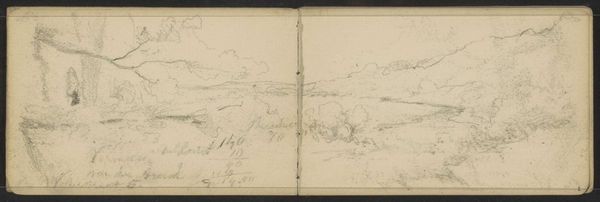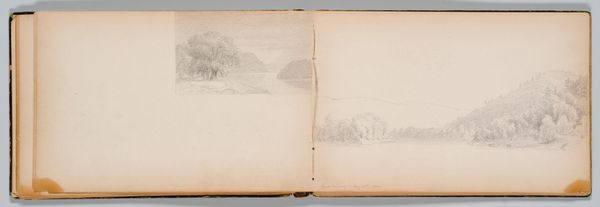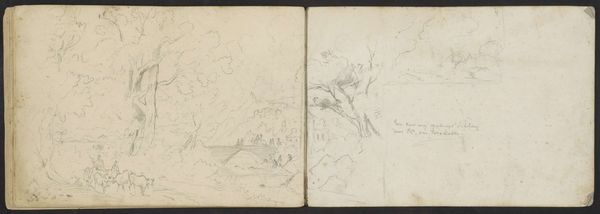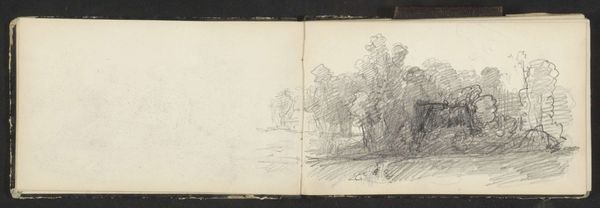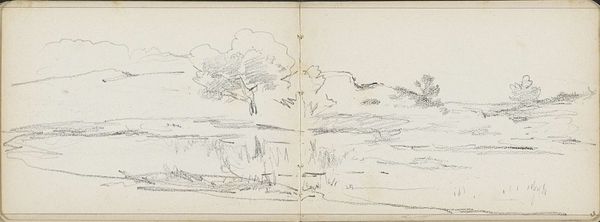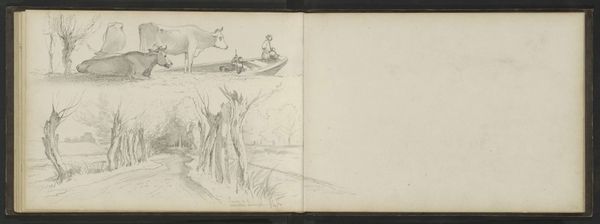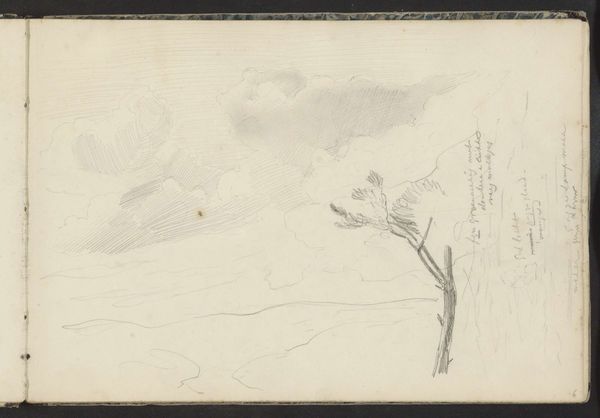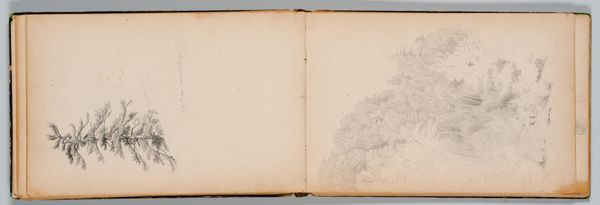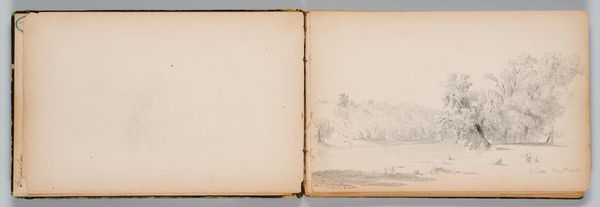
drawing, paper, ink
#
drawing
#
dutch-golden-age
#
landscape
#
paper
#
ink
Copyright: Rijks Museum: Open Domain
Curator: Here we have Abraham de Haen the Younger’s 1731 drawing, "Kapel van Huis Isselt op de grens van Soest en Amersfoort," rendered in ink on paper and part of the Rijksmuseum collection. Editor: It has this incredibly serene, almost melancholy atmosphere. The delicate lines seem to just barely capture the building against the landscape. Curator: Indeed, there is a certain understated quality to the draftsmanship. Consider how de Haen uses a medium as readily available as ink to portray this chapel not as a majestic house of God but as a humble building merging with the nature that surrounds it. Editor: The choice to depict it within the folds of a sketchbook, using inexpensive paper and widely-available ink also places the focus squarely on its status as functional infrastructure: a tool for facilitating art, design, and public knowledge of the built landscape. What's striking is how it humanizes even an institutional space. Curator: I'd agree with you, but I believe there's also some deeper purpose. One must consider what displaying a commonplace church implies within the shifting sociopolitical landscape of the Dutch Golden Age? What messages does the display of such ordinary images relay? What values are communicated by emphasizing regional landmarks? Editor: I think those are good considerations. Speaking to the values conveyed here: it's hard not to feel a sense of the accessibility of artistic practice. Art-making wasn't necessarily an elaborate procedure demanding expensive media or tools: it was readily accessible to anyone who could find paper and ink! Curator: Exactly! The ink-on-paper medium underscores this chapel's connection to local culture, illustrating art as part of everyday social infrastructure, rather than a rarefied sphere. Editor: So we move away from an image viewed within hallowed art space towards thinking of accessible methods of creation for this and for other public images from that time... Curator: Precisely, by studying pieces like this one, we gain crucial understandings of art-making as part of the general creative landscape of society and social exchange within that context. Editor: It is always surprising to examine images such as these in that we see the importance of the work itself while gaining crucial insight into production methodologies and cultural meanings of public artworks throughout history.
Comments
No comments
Be the first to comment and join the conversation on the ultimate creative platform.
